I recently received an assortment of samples from Resketch, a Phoenix, Arizona based brand that makes notebooks and other stationery products out of 100% reclaimed paper. I’ll just cut to the chase and say that I love this concept and the products they sent me. The design looks great, and they offer a nice variety of notebook sizes, as well as other handy paper products for desktop use. Let’s take a closer look!
The notebooks I received are a wirebound 7×9″ notebook, a wirebound reporter notebook measuring 4×8″, and a staple-bound pocket journal measuring 3.5×5″. They all have sturdy black covers featuring an R logo on the front cover and the brand name on the back.
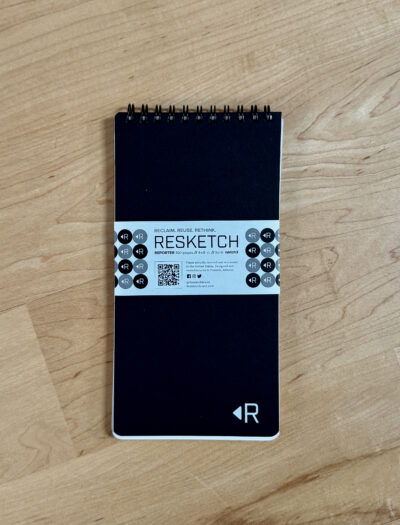
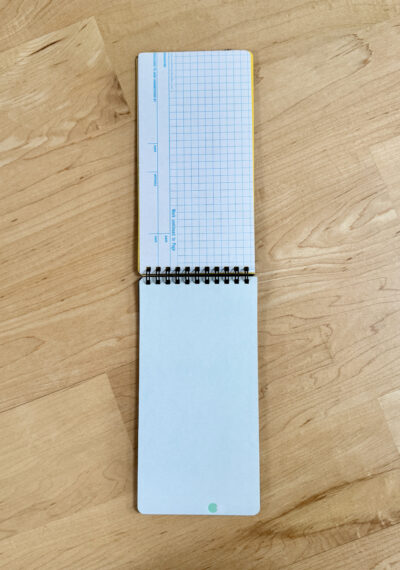
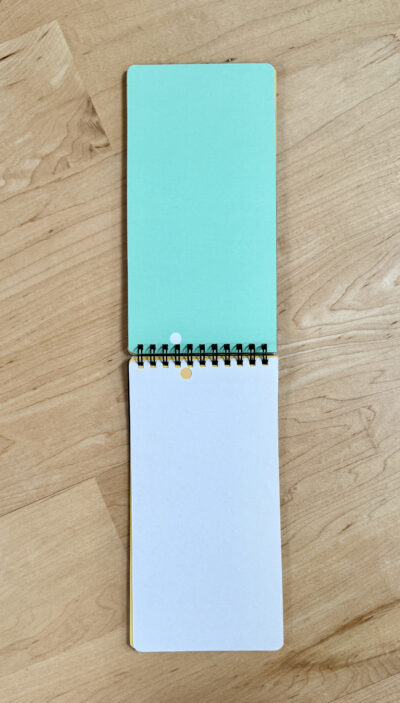
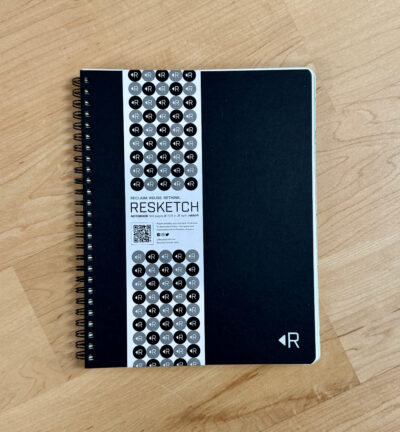
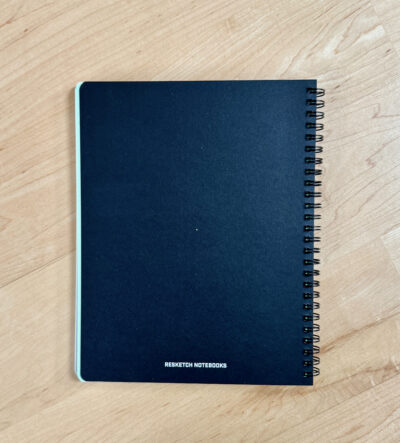
I also received a 5×8″ deskpad and a 3×3″ notepad, both with glue on one edge holding the sheets together. Each has a removable paper brand with more branding and product details.
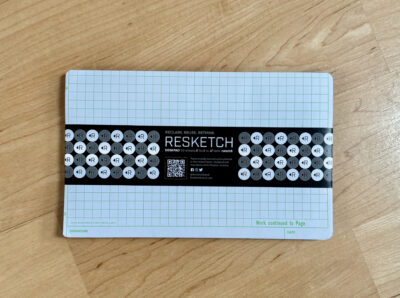
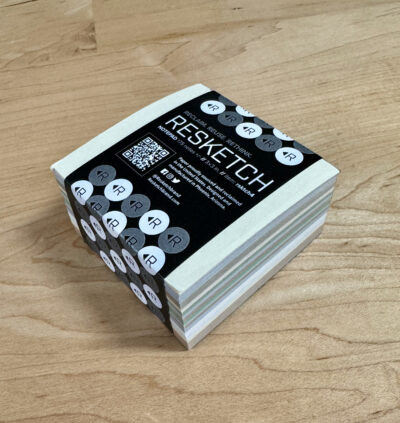
I love that they used a wire-o binding so that the covers can be flipped over completely. My only beef with the pocket journal is that it’s half an inch shorter than the 3.5 x 5.5″ size I like for staple-bound notebooks, but that’s just my personal preference.
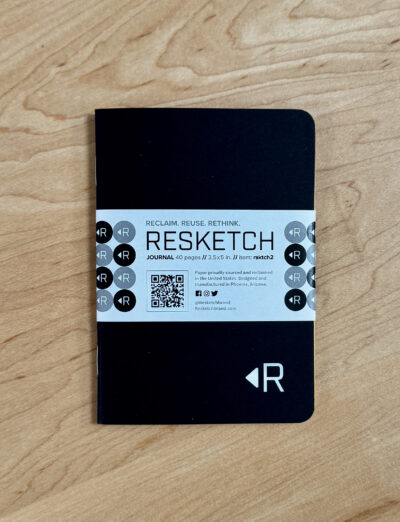
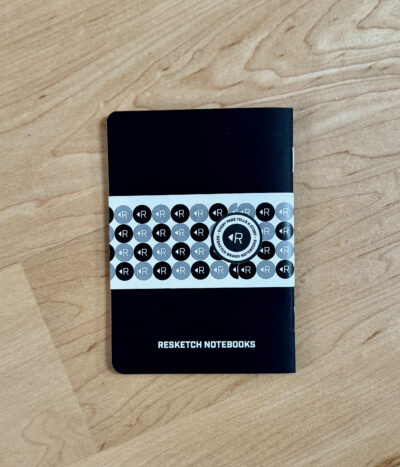
Inside each, you get an assortment of reclaimed paper. If you’re curious about how reclaimed paper is different from recycled paper, here’s how Resketch explains it on their website:
Reclaimed paper is perfectly usable yet unused paper rescued from the waste stream before it is thrown away or recycled.
Recycling programs are great and well-intentioned. However, paper recycling is a chemical and energy-heavy process – it helps us reduce our need for virgin wood fiber which is great, but what if we can delay that process even further? Paper fibers can go through the recycling process roughly 5-7 times before the fibers break down and need to be retired. Worse, there is no real way to tell how often paper fiber has been recycled until it enters the pulping stage. Pulping is the process of breaking down the used paper into pulp, which consists of separating the paper fibers and removing any contaminants. During this stage, the fibers are subjected to mechanical and/or chemical treatments to separate them and create a pulp slurry. Only then do we know the fibers’ quality and strength – if the fibers have undergone significant degradation, they are deemed unsuitable for further recycling.
By rescuing and reclaiming unused yet perfectly usable paper BEFORE it enters the recycling or waste stream, our impact on the environment and Mother Nature becomes much more impactful. After all, we made the paper in the first place – we might as well use it to its fullest potential.
My samples all have a pleasing variety of white and pastel tones, mostly in shades of green and yellow. Some have printing on them, some don’t. I spotted a little bit of writing on one page, but otherwise the paper all feels clean, unused, and un-crumpled. Occasionally there will be a hole punched along an edge.
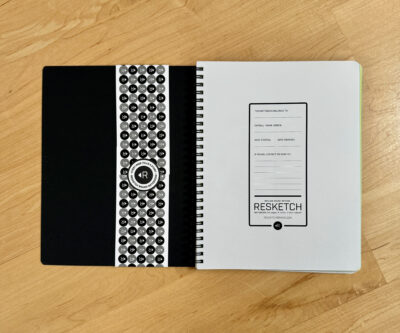
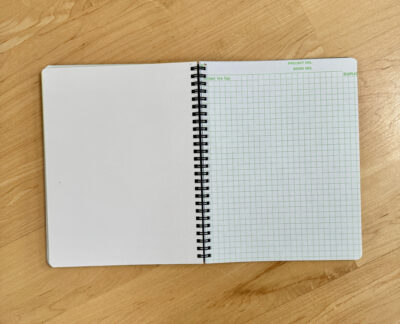
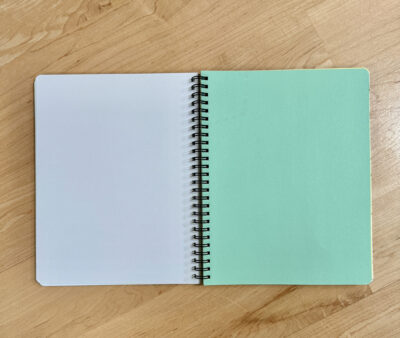
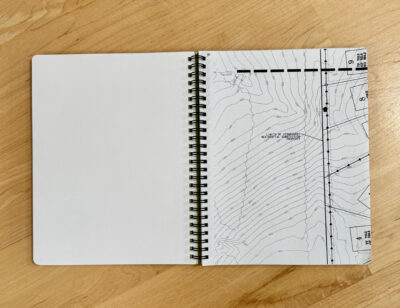
I love seeing different patterns, sections of architectural plans, grids from some sort of form, and all the other random bits of paper they’ve incorporated. Almost all of the sheets have markings that are very unobtrusive, and if there’s occasional a sheet with topographic lines or something a bit more busy, I’d be happy just doodling on it. This kind of unpredictability might not work for everyone, but I think they have selected their paper carefully enough to make it aesthetically pleasing and very usable.
One thing I’m leaving out of this review is my usual pen tests. The paper in these notebooks has varying weights and textures, so there’s no point in testing one sheet. Dedicated fountain pen users might not want a notebook where you’re not sure how each page will perform in terms of show-through and bleed-through, but if you primarily use gel pens, ballpoints, or pencil, you’ll be fine.
If you find the black covers too minimal, or want just white paper inside, Resketch also sells some limited edition notebooks. These have colorful covers that are each one of a kind, while the inside pages are just plain 20# white paper.
If you’re experiencing a sense of deja vu reading this post, you’re not alone. I knew I’d reviewed something similar in the past, and it finally came back to me: the Nomad Notebooks I bought from a Kickstarter and reviewed in 2019. Those had a similar concept of mixed paper, but it wasn’t necessarily reclaimed paper. That company now seems to be defunct, so if you miss the Nomad aesthetic, Resketch might fill the gap!
The Resketch notebooks I received are reasonably priced at $22 for the notebook, $16 for the reporter, $14 for a set of 3 pocket size journals, $6 for the notepad and $12 for the deskpad. They aren’t the cheapest options for notebooks these sizes, but they aren’t wildly expensive either, and you can feel good about using a US-made product that is keeping paper out of landfills and reusing it in an eco-friendly way. Your local stationery store may not be carrying them yet, so check out their online shop.
You can also throw your hat in the ring for my giveaway of some of these samples! One winner will be randomly selected from entries received by blog comments below. If you also include a link back to a post mentioning both Notebook Stories and Resketch on your own website or social media, I will count you in for two giveaway entries, increasing your chance of winning. Shipping of the prize will be to US ADDRESSES ONLY, please! Deadline for entry is Friday May 10, 2024 at 11:59 EST.

Well this caused a flashback for me. I was a small press/copycenter operator for 20 years or so at a state office and used to bind up test prints, bad runs, etc for day care places my boys stayed at. Also would turn the stuff into notpads for use around the office and in my print shop. I’m glad to know that someone else in the world is doing this, but I’m sure others did it as well. Very cool. Thanks for the memory wake up. Retired me doesn’t get to do that stuff any more.
I left a comment on twitter/x using the hashtag #NotebookStories. But these look like fun notebooks